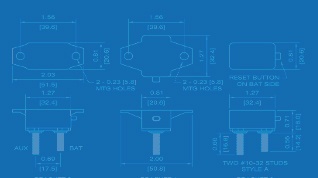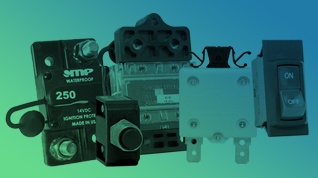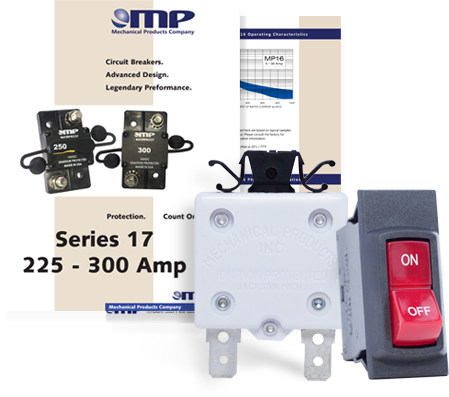A Trip-Free circuit breaker / supplementary protector is one that will trip open even if the ON-OFF mechanism is held in the ON position. This is an important characteristic of a circuit breaker as it protects humans and equipment from the hazards of overcurrent. If a breaker is tripping, it is doing its job. When its not doing its job wires can overheat and start fires, motors can burn out, people can be seriously injured. Read further for a more in-depth explanation.
Trip-Free & Trip-Free, Cycling
According to UL1077:
A “Trip-Free” supplementary protector is, “a protector designed so that the contacts cannot be held in the closed position by the operating means during trip command conditions.” In other words, a “Trip-Free” device has the ability to automatically open a circuit in a fault situation, even though its actuator is physically held in the “on” position. This could also be thought of as “Trip-Free, Non-Cycling” (in contrast to the “Trip-Free-Cycling” described below) by UL1077’s requirements, as the contacts should remain in the open position until the actuator is released and reset.
A “Trip-Free, Cycling” supplementary protector (aka, Cycling Trip-Free) is, “a protector designed so that the contacts cannot be held in the closed position by the operating means during trip command conditions, but will reclose when the closing command is maintained. The protector will continue to close momentarily and repeatedly as long as the close command is maintained by the operating means during trip-command conditions.” In other words, a “Trip-Free, Cycling” device, with its actuator held in the “on” position, will act as an automatic-reset protective device as long as the fault condition is present, cycling repeatedly between opened and closed circuit conditions until such time as the fault is removed or the device fails.
While the mechanisms required of “Trip-Free” devices make them generally more expensive than “Trip-Free, Cycling” types, due to various design issues associated with the end product, one type of mechanism may be preferable over the other. Despite the designer’s preference, close attention should be paid to the agency standards applicable to the end product. Dictates within specific standards may mandate the use of one type of operating mechanism over the other.













